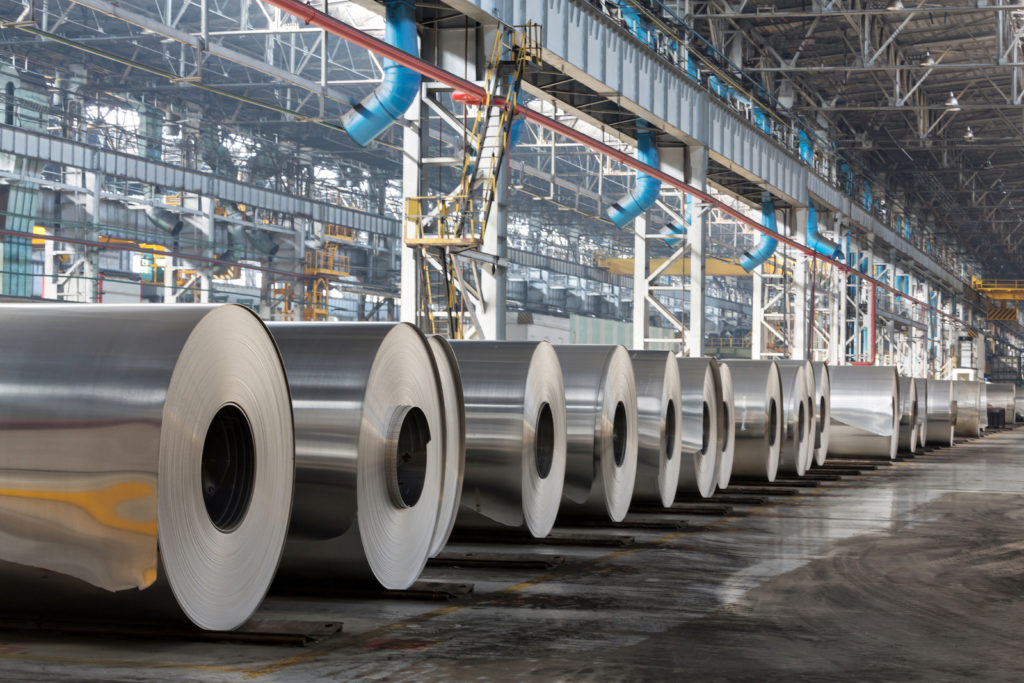Aluminum Fabrication: The One of a Kind History of an Everyday Metal

It is in your kitchen, your car, toolbox, the airplane you ride on, the vessel that holds that carbonated and sugary drink, the cutlery you use, and in your favorite electronic devices. At some point in history, this metal was far more popular and more valuable than gold. It is highly abundant on the earth (the 3rd most common element in the earth’s crust) and is used in a wide range of products in our modern life. So what is the story? How did it become such a ubiquitous and necessary part of our everyday lives? We explore this question today!
Aluminum a Metal More Popular than Gold
Aluminum has quite a history. Beating out its shiny counterpart that we all associate with riches and wealth, aluminum was the desired metal of the elite, royalty, you name it. In the mid-1800s, aluminum was more valuable than gold. So much so that at that time, Napoleon’s III most important guests were provided aluminum cutlery and those less-important-not-so-worthy guests would be relegated to using mere silver. History suggests that this custom was a direct result of Napoleon’s frustration with the inability of his cohorts to swiftly and quickly produce the aluminum material they needed. So, the story goes, he became so frustrated that he had all of the available aluminum melted and made into cutlery that he then used as his prized possession for special guests.
Napoleon had high hopes for this nifty metal. He aimed to use it as a central material in weapons and armor production. He funded work to help chemically extract the metal from the earth, but at that time it was a very involved and slow process. This is part of what caused the frustration. The techniques and technology to make use of this material had not yet been fully developed.
The Incredible Discovery of Aluminum Extraction Methods
So while aluminum is abundant and commonly found on the earth’s crust, it is the excavation and extraction endeavor that made it quite the challenge. Aluminum bonds with other elements, so it is not found in nature as a pure metal. When it comes to the history of aluminum, the story of Charles Martin Hall is often central to its role in our daily lives—especially here in America.
This savvy scientist would develop a process for the electrolytic extraction of the element in his woodshed in 1886. His invention would lead him to become Alcoa—the largest producer of aluminum in the world and would launch him into multimillionaire territory. Aside from its scientific importance, the story has great historical value because of its serendipitous nature. As Hall was working on this extraction method in an Ohio woodshed, another scientist on the other side of the world was also developing a similar technique.
The answer was electricity. Both young men of 22 years — one working in Ohio and the other in France— would come upon the answer almost simultaneously. The method is still relatively the same today. First, there is the dissolving process, where cryolite is used to dissolve alumina from bauxite. This mixture is poured into a vat and it is struck with vast amounts of electricity. The aluminum metal then collects at the bottom of the vat.
Aluminum’s Moment in the Sun
When the Washington Monument was completed in 1884, aluminum was used to cap the monument. The apex of the monument—composed out of aluminum— was popular and a highly reported detail of the work. By the end of that week, everyone in America that had read about this grand monument, knew what aluminum was and how valuable it had become. A pound of aluminum then was worth $16. Once a viable method for its extraction was found the metal would go down to just about 50 cents per pound.
Aluminum in Early Flight, War, and Space Exploration
As the process for aluminum extraction was discovered, patented, and popularized, the production of this fine metal began to make the rounds as people discovered just how useful it could be to the new industrial age and technological advancements of the 20th century. Aluminum fabrication and production would continue to grow as America grew and innovated. In 1903, Wilbur and Orville Wright were tinkering with the idea of putting man in a flying machine.
As they worked, one of their team members suggested that perfect for their four-cylinder engine and light enough to stay airborne, could be an alloy of aluminum. This would reduce the airplane’s weight and be strong and resilient enough for the job. Reducing the machine’s weight would be an essential part of getting the first Wright flyer into the air. It is because of its lightweight that it is commonly used across the transportation industry, as it allows for greater fuel efficiency and reliability. The same concept applies to space flight and space exploration. Our landing on the moon and sending spacecraft into orbit would not be possible without the lightweight and durability of aluminum.
Aluminum in Today’s Industries
Today, aluminum fabrication is just as important as ever. From our forks to our transportation to our infrastructure, this metal is everywhere. Important industries that use aluminum for their production, tools, and materials include:
- Construction
- Electrical
- Consumer Goods
- Transportation
Its properties make it a desired material for a variety of purposes. Not only is this a lightweight metal that can withstand a lot of pressure, but it is also durable and quite resistant to corrosion. Its incredible properties include:
- Lightweight
- Durable
- Ductile
- Malleable
- Conductive
- Resilient
- Strong
Steel and Aluminum Fabrication: Get Quality Metal With Steel Specialties
Here at Steel Specialties, we not only specialize in steel fabrication but also in aluminum fabrication. We know the importance of this metal in our industries and across our community.
Are you looking for quality metal fabrication? Call Steel Specialties today.

